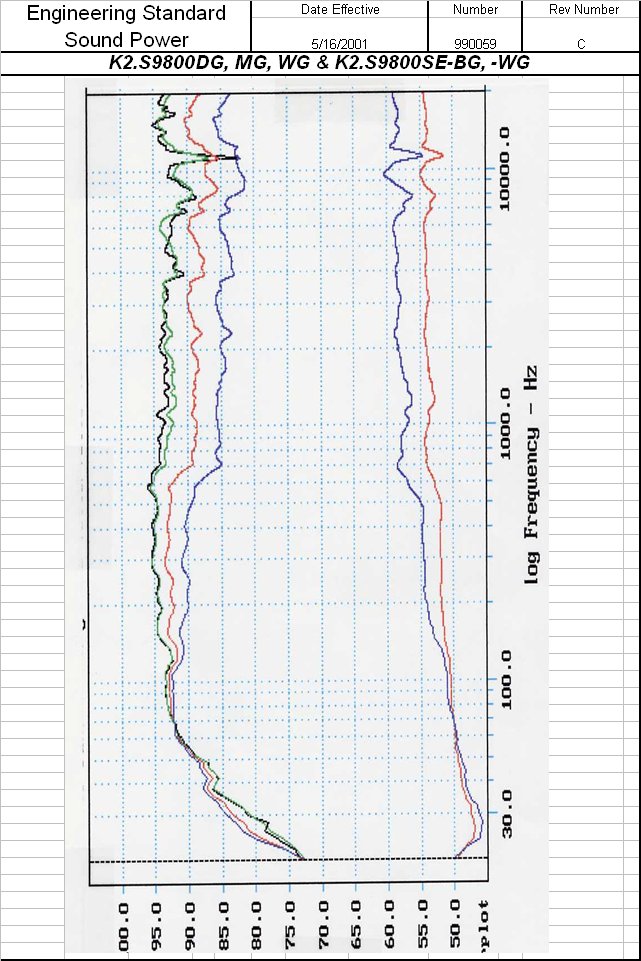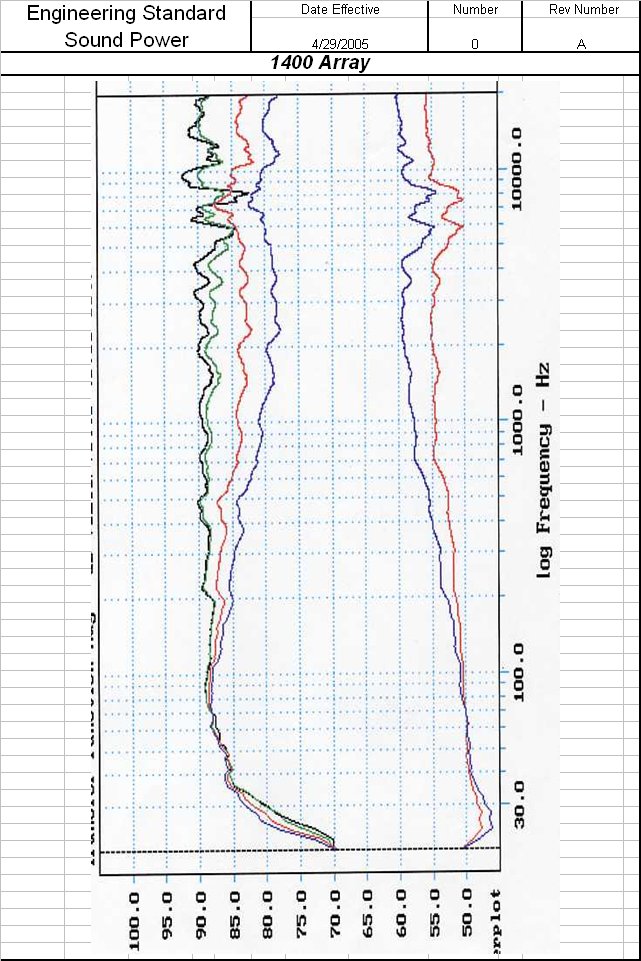Hi
I am planning my new 3-way TAD (mostly) speaker.
Bass: Usher 15HM (temporary, until a set of TAD shows up locally)
Midrange: TAD TM-1201 (on its way)
Tweeter: TAD TD-2001 on a Yuichi horn. (not bought yet)
Preferably crossed actively at about 300Hz and 3kHz (has anyone tried using the midrange that high?) Otherwise 1kHz - measurements will show, but the horn has to be big enough to accomodate the 1kHz crossover. I am thinking of using Yuichis A-480 horn.
Any thoughts on this project?
Many thanks,
Jeppe
Denmark
I am planning my new 3-way TAD (mostly) speaker.
Bass: Usher 15HM (temporary, until a set of TAD shows up locally)
Midrange: TAD TM-1201 (on its way)
Tweeter: TAD TD-2001 on a Yuichi horn. (not bought yet)
Preferably crossed actively at about 300Hz and 3kHz (has anyone tried using the midrange that high?) Otherwise 1kHz - measurements will show, but the horn has to be big enough to accomodate the 1kHz crossover. I am thinking of using Yuichis A-480 horn.
Any thoughts on this project?
Many thanks,
Jeppe
Denmark
The Usher will probably be every bit as good as a TAD in bass and midbass. Really it's mostly a matter of the driver's T/S vs. the enclosure.
Considering the use of poly graphite for a mid, I'd recommend looking into this driver instead for bass and sub-bass:
http://www.sbacoustics.com/index.php/products/woofers/15-sb42fhc75-6/
The mid is unique, but like any larger diameter it will be more directive as you go higher in freq.. You'll need to determine it's response off-axis vs. that of the horn/driver you want to combine it with to get an even response horizontally. The crossover will likely be lower in freq. than you are intending, but that should also mitigate problems with combing.
Your TAD/Yuchi A-480 preference should work well. Personally I'd opt for the "fin-less" version of that horn.
Note: IF the TAD mid has a wider dispersion pattern than most mids that size (due to it's dustcap and shallow profile), and you can actually crossover higher then there is NO reason for the TAD and larger horn. Instead look at the A-1k with an 18 Sound NS1095N and pocket the difference.
Considering the use of poly graphite for a mid, I'd recommend looking into this driver instead for bass and sub-bass:
http://www.sbacoustics.com/index.php/products/woofers/15-sb42fhc75-6/
The mid is unique, but like any larger diameter it will be more directive as you go higher in freq.. You'll need to determine it's response off-axis vs. that of the horn/driver you want to combine it with to get an even response horizontally. The crossover will likely be lower in freq. than you are intending, but that should also mitigate problems with combing.
Your TAD/Yuchi A-480 preference should work well. Personally I'd opt for the "fin-less" version of that horn.
Note: IF the TAD mid has a wider dispersion pattern than most mids that size (due to it's dustcap and shallow profile), and you can actually crossover higher then there is NO reason for the TAD and larger horn. Instead look at the A-1k with an 18 Sound NS1095N and pocket the difference.
Last edited:
I should also add that these are the horns I'd recommend (instead of the Yuchi's):
Welcome to Bentwood Horns
However you'll get better sound from a Beyma TPL-50h.
Welcome to Bentwood Horns
However you'll get better sound from a Beyma TPL-50h.
Last edited:
Hi
I am planning my new 3-way TAD (mostly) speaker.
Bass: Usher 15HM (temporary, until a set of TAD shows up locally)
Midrange: TAD TM-1201 (on its way)
Tweeter: TAD TD-2001 on a Yuichi horn. (not bought yet)
Preferably crossed actively at about 300Hz and 3kHz (has anyone tried using the midrange that high?) Otherwise 1kHz - measurements will show, but the horn has to be big enough to accomodate the 1kHz crossover. I am thinking of using Yuichis A-480 horn.
Any thoughts on this project?
Many thanks,
Jeppe
Denmark
You should consider the SEOS-15 or SEOS-18 (1" throat) that is being offered out of poland (See waveguide/horn thread in the group buy forum).
It will have superior measurements to all other horns from 1KHz on up (IMO). The TAD TD-2001 should match well You can probably request a specific angle to match the TAD perfectly. Where are you buying the TAD TD-2001s? I have one avalable
I would then go with a larger mid range to match the directivity/sensitivity of the horn at the XO point (JBL 15" 2226Js come to mind). Add a big bass bin with a quality subwoofer that can run from 20Hz to 200Hz.
Honestly, I never understand why people bother with low sensitivity driver choices period but to try and match them with a high sensitivity/high quality CD makes no sense at all.
By the way, why would You use the SB Acoustics instead of a TAD og Usher? Better low end?
Thanks,
Jeppe
- it's a composite (paper and glass), so it's going to be stiffer and that generally helps with detail. IF you are getting the "h" version of the TAD mid then it should help marginally with integration between the two drivers. IF you aren't getting the "h" version (with the poly graphite), then I'd just stick with the Ushers depending on how low you want to go vs. spl. (..in an active configuration you can always eq. the low end but you are always limited by excursion/sd vs. spl.)
Yes, you most definitely should measure the off-axis horizontal response of the mids every 5-10 degrees off-axis.
Anything much over 1 kHz will be better with the Beyma.
both the TM1201 and TM1201H share the same cone. The only difference is in the VC, the H being a 16ohms version.
..oh, I thought there were some older non "h" versions that were paper with a foam graphite dustcap.. My bad.
Last edited:
Member
Joined 2003
Scott,
Have you heard the TPL-150 vs the Aurum Cantus AST30130? Any comments?
(Sorry for a little OT)
Nope.
I've only heard designs with ESS, Etons, and older Mundorfs.
Overall my guess is that differences between heils are largely the result of rear damping and overall horizontal coverage (..beyond freq. linearity and eff.). (..this is also accepting the obvious difference in larger Heils used lower in freq. and if operating as dipoles.)
If you put the AC in a lager waveguide then it will likely sound better than the Beyma (h version), despite being less eff. and assuming it's linearized for whatever axis you are listening to. (..all because it's operated lower in freq.). I *think* Hawthorne Audio is working on something very similar to this, but only for commercial use. (I believe I remember seeing it on their forums.) I think it's probable (for the same reason) that people would prefer the AC over the Beyma (without either having a waveguide) - assuming the AC is operated lower in freq..
I also think that ultimately you could improve the subjective performance of either by improving the rear chamber on either. (..by lowering motion resistance.)
My personal opinion is that ribbons generally sound better operating in identical (usable) pass-bands. Unfortunately the two aren't nearly comparable in this context with the Heils on average going at least an octave lower for the same basic profile (..and usually with a LOT less non-linear distortion at those lower freq.s.)
For the OP I looked at people previously using compression drivers with waveguides and then switching to the TPL-150h. Those few that have seem to share the same impression that the Beyma's are significantly better (assuming an appropriate crossover and lower freq. cut-off).
You should consider the SEOS-15 or SEOS-18 (1" throat) that is being offered out of poland (See waveguide/horn thread in the group buy forum).
It will have superior measurements to all other horns from 1KHz on up (IMO). The TAD TD-2001 should match well You can probably request a specific angle to match the TAD perfectly. Where are you buying the TAD TD-2001s? I have one avalable
I would then go with a larger mid range to match the directivity/sensitivity of the horn at the XO point (JBL 15" 2226Js come to mind). Add a big bass bin with a quality subwoofer that can run from 20Hz to 200Hz.
Honestly, I never understand why people bother with low sensitivity driver choices period but to try and match them with a high sensitivity/high quality CD makes no sense at all.
Thanks for the "link" - some of their horn are very neat - including the OS waveguide. I haven't yet found a source for the TADs as TAD is extremely rare in Europe
Why would you use a 2226 instead of a midrange unit?
I'm not quite sure what you mean in your last statement about low sensitivity drivers and horns. Could you rewrite that? '
Many thanks,
Jeppe
The TM1201 will do much better than a 2226H in the 200Hz-1kHz range (and will be able to sustain its piston behavior up to at least 1.5khz)
yes but if you are setting the XO below 1KHz then the directivity of a 12" driver will mismatch the directivity of the horn, It depends on the priorities and XO point,
Does TAD offer 15" drivers?
yes but if you are setting the XO below 1KHz then the directivity of a 12" driver will mismatch the directivity of the horn, It depends on the priorities and XO point,
and the directivity of the horn.
TH4001 or westlake/2397 horn for example do have a very large directivity in this range. Same goes for horns used outside of the directivity control range, like the JBL array1400 that uses the pattern flip principle, with a horn that get its directivity control around 2.5khz in the horizontal plan. That makes for a very smooth transition with the bass driver, with a large choice of possible crossover frequencies as the "directivity gaining" of the horn is somewhat symmetrical to the "directivity losing" of the woofer.
TAD does offer 15" drivers, but these are classic paper cones, like the JBL ones, nothing compared to the graphite cone of the TM1201 (or some McCauley drivers).
Last edited:
here is an illustration (pics from audioheritage Technical Reference/System Information section)
JBL S9800, 15" driver, horizontal horn, 800Hz crossover:

JBL Array 1400, 14", vertical horn (very similar to the one of the S9800), 800Hz crossover:

note that these are not direcitity curves:
first curve is on axis response, second is an average of all the measurement in a 30° horizontal / 15° veritcal area, third is the first reflexion, fourth is the power response (and the last two the directivity index curves of the direct and power response)
JBL S9800, 15" driver, horizontal horn, 800Hz crossover:
JBL Array 1400, 14", vertical horn (very similar to the one of the S9800), 800Hz crossover:
note that these are not direcitity curves:
first curve is on axis response, second is an average of all the measurement in a 30° horizontal / 15° veritcal area, third is the first reflexion, fourth is the power response (and the last two the directivity index curves of the direct and power response)
Last edited:
- Status
- This old topic is closed. If you want to reopen this topic, contact a moderator using the "Report Post" button.
- Home
- Loudspeakers
- Multi-Way
- TAD 3-way